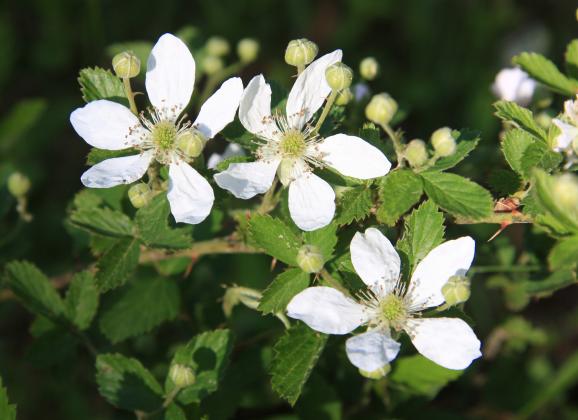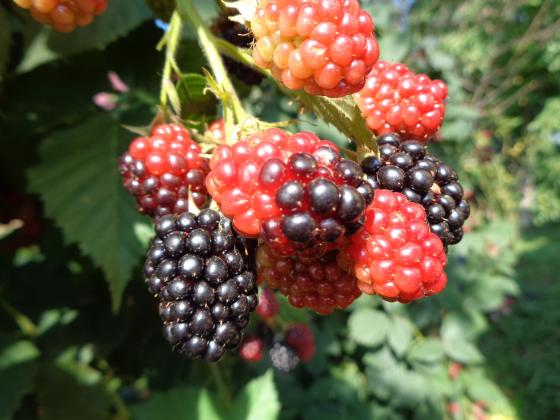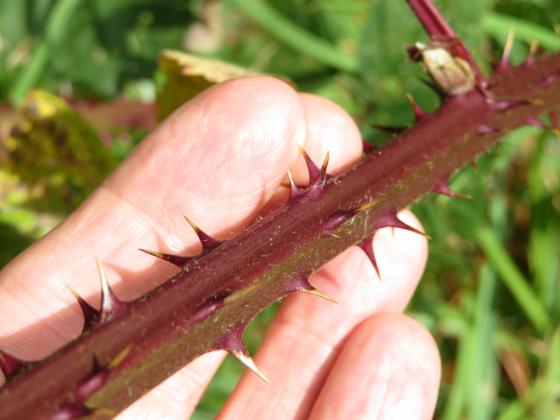Rubus spp. - Ancient blackberry authors and artists provide history lessons
Rubus spp., several species of blackberries and dewberries, grow all over the world and can be found in southeast Texas almost all year in one form or another. If the plant grows as a bush, I call it a blackberry. If it vines along the ground, I call it a dewberry. That’s not a scientific reason but it’s the only one I’ve got. I use both in the same ways.
The familiar fruit is not a berry, but a drupe, an aggregate fruit composed of individual drupelets that we call a berry. Blackberries don’t have thorns. A thorn is a modified branch. Blackberries have prickles that grow from the outer layer of the stem or bark. The other sharp pointed plant growth that hurts when it sticks you is a spine, a modified leaf. Cacti have spines.
Blackberry’s root and plant base, crown, is perennial, living 15 to 20 years. Canes, stems, live two years. They are 3 to 6 feet tall, red-brown and woody with a green growing tip. The first year the stem matures and the second year it produces fruit then dies. There are everbearing varieties that produce fruit in the first year.
In southeast Texas the alternate compound leaves are seen in late fall and through most of the year. They can be 4 inches long and 3 inches wide with 5 to 7 leaflets. They are rough due to serrated edges and fine hairs on both sides. Green leaves may turn yellow to red as they age. In spring, five-petaled, 1 to 4-inch crinkly white flowers bloom followed by the fruit which may persist through fall. Their color changes from white or green to red to shiny black to dull black when they are at their peak of ripeness. They don’t continue to ripen after harvesting.
Most are familiar with blackberries fresh, in jams, cobblers, etc. Blackberry leaf is an ingredient in some herbal tea blends. The leaf and bark have the most medicinal value. Blackberry has treated diabetes, diarrhea, women’s issues, mouth problems, etc. Other uses are at the Native American Ethnobotany Database, naeb. brit.org. Rubus spp. are in the Food and Drug Administration Poisonous Plant Database at fda.gov. Following are two of many Rubus spp. articles from the National Institutes of Health, ncbi.nlm.nih.gov.
• “Berry Leaves: An Alternative Source of Bioactive Natural Products of Nutritional and Medicinal Value”.
• “Rubus fruticosus (blackberry) use as an herbal medicine”.
The U.S. Department of Agriculture Research Service, ars.usda.gov, says that Rubus spp. ancient texts and images from about 500 BCE have provided information about how the plant was used and allowed an exploration into the history of art. They say, “During the next millennium, plant artists turned away from observation and copied previous images without reference to living plants. This was a sad period in the history of science until the rebirth of intellectual thought we label the Renaissance [14th to 17th centuries].” The title is “Rubus Iconography: Antiquity to the Renaissance”. This is perhaps a cautionary tale.




